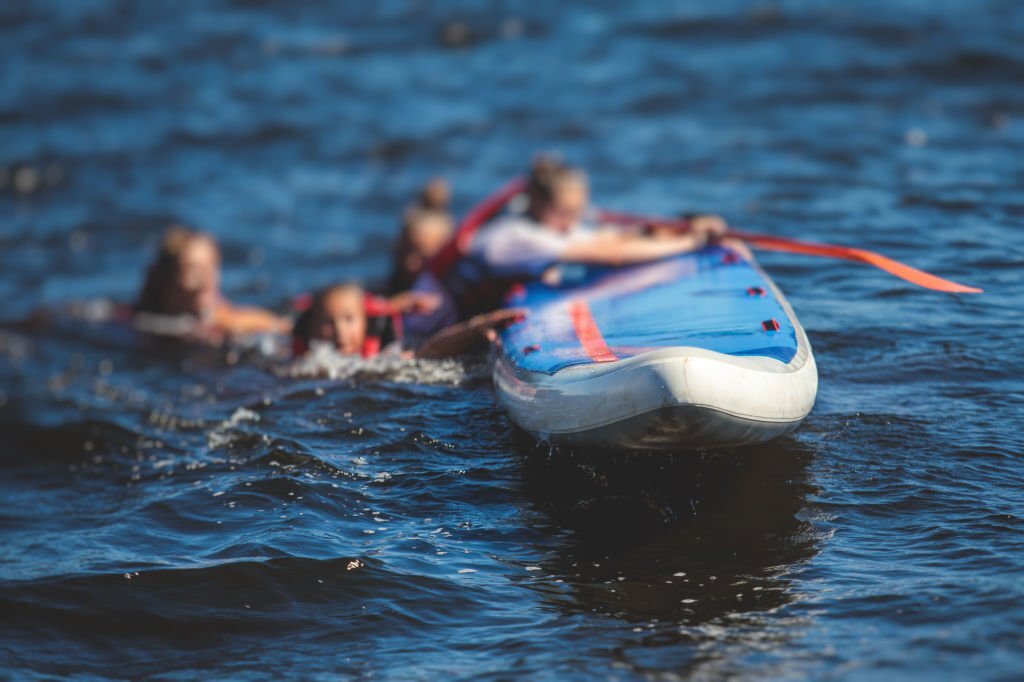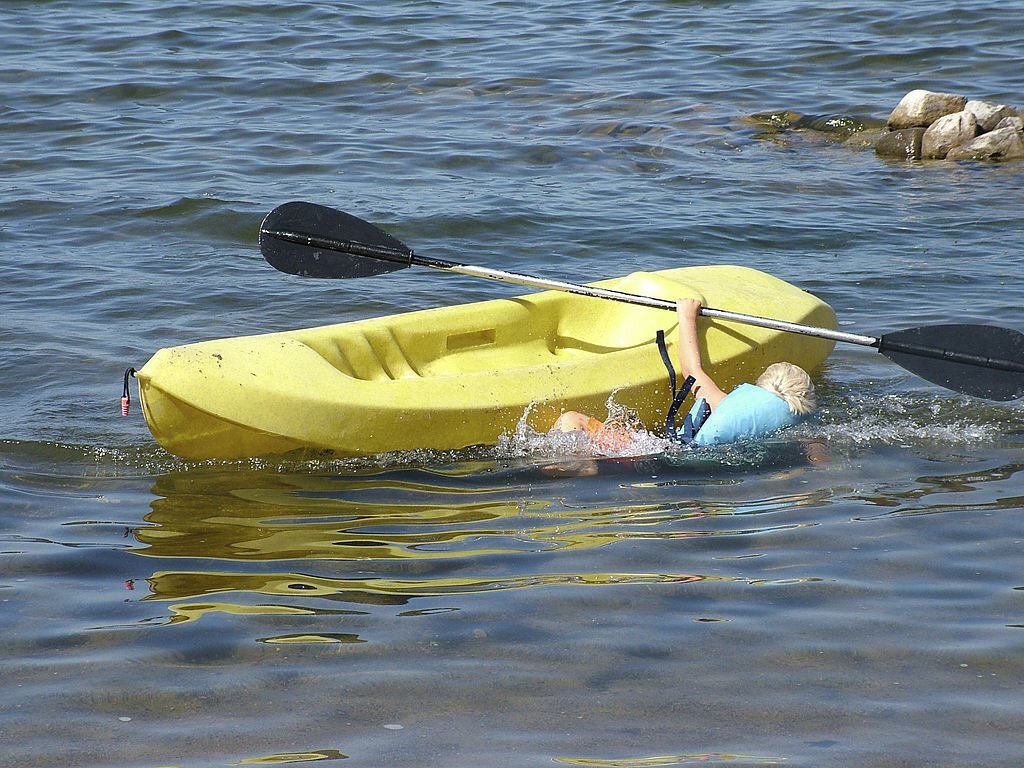In this article, we will discuss Safely Floating When Your Small Craft Capsizes. For those who are just starting on their journeys, this could result in tragedy – so what should you do if your small craft suddenly capsizes?
Table of Contents
The Ultimate Guide to Safely Surviving When Your Small Craft Capsizes.
For those who enjoy boating or any water-related activities, the thought of a small craft capsizing can be a scary one.
Accidents can occur unexpectedly, so it is important to be prepared in order to ensure your safety. This guide will provide you with the necessary steps and strategies to safely float when your small craft capsizes.
We will provide you with full details on learning about the physics of capsizing and what you require to have on board. This will help you navigate this potentially dangerous situation effectively. By collecting the necessary knowledge and being well-prepared, you can effectively manage an unexpected capsize and prioritize your safety until assistance arrives.
1. Understanding the physics of a capsizing
Understanding the physics of capsizing is crucial when it comes to safely surviving such an incident in a small craft. Capsizing occurs when a boat or any small watercraft is tipped over and turned upside down in the water.

Gravity (CoG) and the center of Buoyancy (CoB)
It can happen due to various factors such as rough waves, strong winds, improper weight distribution, or sudden weight shifts. To comprehend the physics behind a capsizing, it is important to consider the concept of the center of gravity (CoG) and the center of buoyancy (CoB).
The CoG refers to the point where the weight of the boat is concentrated, while the CoB represents the point where the buoyancy force acts. For a stable craft, the CoG must be positioned below the CoB.
This ensures that the boat remains upright and capable of maintaining its balance. However, when external forces like rough waves or sudden shifts in weight act on the boat, they can upset this delicate balance. As a result, the CoG can shift higher than the CoB, causing the boat to become unstable and more prone to capsizing.
The physics of capsizing can vary based on the type and design of the small craft. The way a boat responds to external forces can be greatly affected by factors like hull shape, size, weight distribution, and the presence of keels or stabilizers.
To prevent capsizing, boaters can take precautionary measures by understanding these principles. To ensure safety while heading out, it is important to focus on proper weight distribution, maintaining a low center of gravity, and being mindful of the weather and water conditions.
Knowing how to react quickly and effectively during a capsizing can significantly improve your chances of survival. It’s important to note that understanding the physics of a capsizing is only part of what you need to know in order to safely survive such an incident.
To ensure your safety in case of a capsizing, it is crucial to have the right safety gear, regularly practice emergency drills, and be knowledgeable about rescue techniques.
2. Preparing your small craft for potential capsizing
Preparing your small craft for potential capsizing is crucial for ensuring your safety on the water. While we hope that such a situation never occurs, it is essential to be prepared for the unexpected.
One of the first steps in preparing your small craft is to ensure that you have the necessary safety equipment on board.
Life jackets
This includes life jackets for each person on board, a throwable flotation device, and a whistle or other sound-producing device to signal for help. It is important to regularly check these items to ensure they are in good condition and easily accessible.

Additionally, it is advisable to have a waterproof bag or container to store important documents such as a copy of your boat registration and emergency contact information.
Another aspect of preparation is to familiarize yourself with the layout of your small craft. Know where the flotation compartments are located, as well as any emergency exits or hatches.
It is also important to secure loose items on board, such as fishing gear or coolers, to prevent them from becoming hazards in the event of a capsizing.
Lastly, consider taking a boating safety course to learn essential skills and techniques for handling emergencies on the water. Being prepared can make all the difference in safely surviving when your small craft unexpectedly capsizes.
3. Essential equipment to have on board
When venturing out on the water in a small craft, it’s crucial to be prepared for any unexpected situations, such as your boat capsizing. While we hope this never happens, it’s essential to have the necessary equipment on board to ensure your safety in such an event.
Here are some essential items to have with you:
1. Personal Flotation Devices (PFDs): PFDs are a must-have for every person on board. Ensure that you have enough PFDs for everyone and that they are in good condition and properly fitted. Opt for Type III PFDs, which are specifically designed for boating and offer excellent buoyancy.
2. Throwable Flotation Device: In addition to PFDs, it’s essential to have a throwable flotation device on board. This can be a ring buoy, a float cushion, or a horseshoe buoy. These devices can be thrown to someone in distress and provide them with additional support in the water.
3. Emergency Signaling Devices: Having a reliable signaling device can greatly assist in getting help quickly. Carry a whistle or an air horn to attract attention if needed. Additionally, consider carrying flares or an emergency strobe light to signal for help during low visibility conditions.
4. Bilge Pump or Bailer: If your small craft does capsize, water may enter the boat. Having a bilge pump or a bailer on board will help you remove water and keep the craft afloat.
5. Knife or Multi-tool: A versatile tool or knife can come in handy in various emergencies. It can be used to cut a tangled line, free yourself from entanglement, or create improvised repairs.
6. First Aid Kit: Accidents can happen, and having a well-stocked first aid kit on board is crucial. Make sure it includes bandages, adhesive tape, antiseptic solution, pain relievers, and any necessary personal medications.
7. Communication Device: Carry a fully charged waterproof mobile phone or a marine VHF radio with you. These devices will allow you to call for help in case of an emergency. Remember, preparation is key when it comes to boating safety.

Having these essential pieces of equipment on board will give you peace of mind and increase your chances of safely surviving if your small craft capsizes. Additionally, ensure that you and your crew are familiar with how to use each item correctly. Stay vigilant, practice water safety, and enjoy your time on the water responsibly.
4. Strategies for surviving a capsizing
When it comes to surviving a capsizing in a small craft, preparation and knowledge are key. While nobody wants to imagine finding themselves in such a situation, it is crucial to be equipped with the right strategies to ensure your safety.
First and foremost, it is essential to remain calm and focused. Panic can cloud judgment and hinder your ability to make rational decisions. Take a deep breath and assess the situation. One of the most important strategies is to stay with your vessel.
Understanding Capsizing
Your small craft can provide buoyancy and visibility for rescuers, making it easier for them to locate you. Clinging to your capsized craft can also help you conserve energy in the water. If possible, try to climb on top of your craft, preferably on the upturned hull. This will reduce heat loss and increase your chances of being seen by rescue teams or passing boats.
It is crucial to maintain a positive buoyancy position, using your legs to keep yourself afloat. Wearing a personal flotation device (PFD) is vital for survival. It will keep you buoyant and increase your chances of staying afloat until help arrives.
Make sure your PFD is properly fitted and securely fastened before getting into the water. Creating a distress signal is another important strategy. If you have a whistle or a signaling mirror, use them to attract attention.
Shouting for help can also be effective, especially if there are other boaters or people nearby. If you are with others when the small craft capsizes, it is crucial to stay together.
Holding onto each other can provide support and maintain a sense of unity, increasing your chances of being spotted and rescued. Remember to stay hydrated, as being in the water for prolonged periods can lead to dehydration.
Avoid drinking salt water, as it will only worsen your condition. If you have access to a floating object or container, use it to collect rainwater for drinking.
Surviving a capsizing in a small craft requires a combination of physical and mental strength. Stay focused, maintain a positive mindset, and use these strategies to increase your chances of a safe rescue. Being prepared and knowledgeable can make all the difference in a challenging situation like this.
We hope you will feel confident in your decision-making and know that Safely Floating When Your Small Craft Capsizes.
